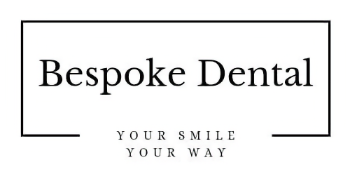Discover the Benefits of Teeth in a Day

Teeth in a Day refers to immediate-load, full-arch implant-supported restorations that restore function and aesthetics within a single surgical appointment, often using All-on-4 or All-on-X concepts to allow provisional fixed teeth the same day. This approach combines preoperative 3D planning, strategic implant placement, and a fixed provisional prosthesis to deliver chewing ability and improved appearance quickly while preserving jawbone stimulation. Readers will learn how the procedure works, who qualifies, cost components, recovery expectations, and how same-day implants compare to traditional staged implants. Many patients face prolonged treatment timelines and removable denture limitations; Teeth in a Day promises a faster, often more comfortable pathway to a fixed arch that functions like natural teeth. The following sections explain the mechanism (CBCT planning, implant angulation, and osseointegration), list the key benefits versus traditional implants, outline candidacy and diagnostic steps, break down costs and financing considerations, describe recovery and long-term maintenance, and offer a direct comparison to staged implant approaches. Throughout, semantic terms like All-on-4, immediate load dental implants, osseointegration, and fixed provisional prosthesis will clarify technical concepts and support practical decision-making.
What Are Teeth in a Day and How Do Same Day Dental Implants Work?
Teeth in a Day are full-arch dental implant solutions that allow immediate provisional restorations by placing implants and attaching a fixed prosthesis on the same day, using detailed CBCT-based planning and precise surgical execution to achieve primary stability. The mechanism relies on strategic implant placement—often angulated posterior implants—to maximize bone engagement and enable immediate function without waiting for full osseointegration. Immediate load dental implants provide immediate chewing ability and cosmetics while the bone remodels and integrates with the implant surfaces over the ensuing months. Understanding this workflow helps patients appreciate how modern imaging and prosthetic planning reduce visits and improve early outcomes.
What is the All-on-4 Technique and Its Role in Teeth in a Day?
The All-on-4 technique is a surgical-prosthetic strategy that uses four implants per arch, placing posterior implants at an angle to increase bone contact and avoid grafting in many cases. Angulation improves anterior-posterior spread and distributes occlusal forces to reduce stress on any single fixture, permitting a fixed provisional prosthesis immediately after surgery. All-on-4 is a hyponym of All-on-X approaches; clinicians may choose All-on-6 or other configurations when bone volume or prosthetic demands require additional fixtures. This technique leverages biomechanical principles and modern prosthetic design to balance immediacy and long-term stability, and understanding when to expand beyond four implants is part of individualized treatment planning.
How Does Osseointegration Support Immediate Load Dental Implants?
Osseointegration is the biological process where bone forms a direct interface with the implant surface, providing long-term mechanical stability; immediate loading protocols capitalize on sufficient primary stability to permit provisional function while osseointegration proceeds. Key factors that support successful integration include implant design and surface treatment, bone quality and density, atraumatic surgical technique, and controlled loading through a well-fitting provisional prosthesis. Clinicians mitigate early micromotion by splinting implants together with a rigid provisional bridge, reducing the risk of fibrous encapsulation and failure. Understanding these biological and mechanical relationships explains why careful case selection and guided prosthetic protocols are essential to immediate-load success.
What Are the Key Benefits of Teeth in a Day Compared to Traditional Implants?
Teeth in a Day delivers immediate functional and aesthetic restoration by combining strategic implant placement with a fixed provisional prosthesis, shortening the treatment timeline and reducing the number of surgical stages compared with conventional delayed protocols. Immediate function preserves patient confidence and social function from day one, and early biomechanical loading helps maintain jawbone stimulation that would otherwise decline with removable dentures. The approach often reduces visits and total treatment time while maintaining comparable long-term outcomes when cases are selected and executed properly. These advantages make immediate-load options attractive for patients seeking fast, fixed solutions without prolonged edentulous intervals.
Different benefits map to specific mechanisms and patient impacts, as shown in the table below that compares core outcomes and how they are delivered.
Benefit AreaMechanismPatient ValueImmediate FunctionFixed provisional prosthesis attached same dayRestored chewing and speech immediatelyBone PreservationFunctional load stimulates bone remodelingReduced resorption compared with denturesAesthetics & ConfidenceProsthetic design and materials (acrylic/zirconia options)Rapid smile restoration and social confidenceReduced Treatment TimeCBCT planning + guided placementFewer visits and faster return to routine
This comparison clarifies how Teeth in a Day converts technical mechanisms into tangible patient benefits and sets expectations for outcomes. The next section explores bone health and how immediate function specifically supports long-term oral function.
For readers ready to act after understanding benefits, scheduling a consultation with an implant-trained clinician is the next step; many dental practices offer implant consultations, 3D imaging, and full-arch treatment planning to determine whether same-day teeth are appropriate.
How Does Teeth in a Day Preserve Jawbone Health and Improve Function?
Immediate-load full-arch implants preserve jawbone by transmitting functional forces through the implant into the surrounding bone, which maintains remodeling signals that prevent the disuse atrophy seen beneath removable dentures. This mechanism—functional loading driving bone homeostasis—is supported by the entity relationship: Implant → transmits → occlusal load to jawbone. Compared with conventional dentures, which rest on mucosa and accelerate resorption, implant-supported prostheses distribute forces to bone and reduce vertical height loss over time. Clinically this results in better long-term support for facial tissues, improved prosthetic stability, and more efficient mastication, which in turn supports nutrition and quality of life.
In What Ways Does Same Day Teeth Enhance Patient Confidence and Aesthetics?
Same-day fixed prostheses provide immediate cosmetic transformation through custom-designed provisional teeth crafted to match esthetic goals and facial proportions, producing a rapid improvement in smile appearance and self-esteem. Material choices for provisonals range from high-quality acrylic to more durable zirconia for final restorations, and provisional shaping allows clinicians to refine occlusion and esthetics during the healing period. Psychosocial benefits include reduced social anxiety and faster reintegration into normal eating and speaking patterns, leading to measurable improvements in patient-reported outcomes. These immediate cosmetic gains often motivate patients to pursue definitive restoration and long-term maintenance.
Who Is a Good Candidate for Teeth in a Day? Eligibility and Assessment Explained
A good candidate for Teeth in a Day typically has adequate bone quality for primary implant stability, controlled systemic health conditions, healthy or manageable periodontal status, and realistic expectations about the immediate provisional phase. The first-stage assessment centers on CBCT imaging to evaluate bone volume, density, and anatomical constraints, combined with a thorough medical history to identify factors—such as smoking or uncontrolled diabetes—that may impair healing. Behavioral and oral hygiene habits influence candidacy and can often be optimized prior to surgery through stabilization of periodontal disease and smoking cessation. Careful selection and preoperative optimization reduce complication risk and set the stage for successful immediate loading.
At the end of this assessment phase, clinicians often recommend specific testing or preparatory treatments to improve outcomes, which is discussed next and includes when bone grafting is necessary.
What Factors Affect Eligibility for Teeth in a Day Implants?
Eligibility hinges on bone volume and density, periodontal health, systemic conditions that affect healing, and habits like smoking that impair osseointegration. For example, patients with poorly controlled systemic disease or active oral infections may be advised to stabilize health before immediate-load procedures, and clinicians assess medication interactions that could affect bone metabolism. Modifiable risks—such as smoking, poor oral hygiene, or untreated periodontal disease—can often be managed to convert borderline candidates into suitable ones. Understanding and addressing these factors through targeted optimization improves predictability for immediate-load implant success.
When Is Bone Grafting Necessary Before Teeth in a Day?
Bone grafting becomes necessary when local bone volume or contour cannot support implant placement with adequate primary stability or when anatomical deficits would compromise prosthetic emergence profiles. Graft types include autograft, allograft, and xenograft materials, each offering different remodeling timelines and handling characteristics; choice depends on defect size, clinician preference, and patient factors. In many cases, angulated implant strategies like All-on-4 reduce the need for grafting by engaging denser anterior bone, but vertical deficiencies or extensive atrophy may still require augmentation. Deciding between immediate grafting and staged augmentation hinges on balancing treatment time, risk, and long-term prosthetic outcomes.
At this point, patients should consult with an oral surgeon or prosthodontist for personalized assessment and CBCT-based planning to determine whether grafting is needed and which protocol best fits their anatomy.
How Much Does the Teeth in a Day Procedure Cost? Understanding Your Investment
Costs for Teeth in a Day vary based on geography, materials, number of implants, need for bone grafting, and whether a definitive zirconia prosthesis is selected; most cost estimates include planning, surgery, implants, temporary prosthesis, and follow-up care. Typical U.S. per-arch ranges reported across practices commonly reflect moderate to significant investment because full-arch fixed solutions involve surgical, restorative, and laboratory components. Major cost drivers include the prosthesis material (acrylic vs zirconia), the number and type of implants, advanced imaging and guided surgery fees, and any adjunctive grafting or extractions. Clear itemization helps patients compare offers and understand what is included in a fee estimate.
Treatment ComponentWhat It CoversTypical ConsiderationsConsultation & CBCTExam, 3D imaging, treatment planningEssential for surgical planning and virtual prosthetic setupSurgery & ImplantsImplant fixtures, anesthesia, operating timeNumber of implants and surgeon fees vary by case complexityProvisional ProsthesisSame-day fixed temporary bridgeLaboratory and prosthetic fabrication includedFinal ProsthesisDefinitive bridge (acrylic or zirconia)Material selection strongly affects costFollow-up CarePost-op visits, adjustments, hygiene maintenanceIncluded in many packages for a defined period
This table clarifies where costs are allocated and which areas commonly vary between providers. Patients should request detailed estimates that separate these line items to compare value rather than price alone.
Practical financing and insurance realities: many patients pursue financing options such as medical credit or in-office payment plans to spread costs, and dental insurance may cover portions of preparatory or prosthetic work but rarely the full implant cost. Practices commonly offer consultation appointments and financing guidance to help patients evaluate options.
What Is Included in the Teeth in a Day Cost Breakdown?
The cost breakdown typically includes a consultation with 3D imaging (CBCT), surgical fees for implant placement, implant components (fixtures and abutments), the provisional fixed prosthesis fabricated for same-day use, and a set number of postoperative follow-ups. Laboratory fees for prosthesis fabrication and material choices (acrylic, composite, or zirconia) influence the final estimate, and any additional procedures—such as extractions, bone grafting, or sinus lifts—are itemized separately. Understanding inclusions helps patients avoid surprise fees and compare proposals on an apples-to-apples basis.
What Financing and Insurance Options Are Available for Same Day Dental Implants?
Financing options commonly include third-party medical credit lines, dental-specific loans, and in-office payment plans that break the total into manageable monthly payments; each option carries different terms and may require credit approval. Insurance coverage varies: some plans may reimburse parts of preparatory work or prosthetic elements but often exclude full-arch implant procedures or limit coverage to restorative aspects. Patients should request pre-treatment cost estimates and speak with their insurance provider about specifics, while clinics frequently provide financial counseling and third-party finance referrals to support treatment access.
What Is the Recovery Process After Teeth in a Day? Healing Timeline and Aftercare
Recovery after Teeth in a Day typically involves an initial soft diet, analgesics and anti-inflammatory measures for swelling and discomfort, and staged prosthetic checks to ensure occlusion and tissue healing. Immediate post-op weeks focus on protecting the provisional prosthesis while soft tissues heal and osseointegration progresses; clinicians advise limited chewing on the provisional and meticulous oral hygiene to prevent infection. Follow-up visits evaluate soft tissue healing, prosthesis fit, and any necessary adjustments, transitioning to definitive restorations after osseointegration and prosthetic planning. Long-term maintenance emphasizes daily hygiene, routine professional cleanings, and periodic prosthesis assessments to preserve function and aesthetics.
What Should Patients Expect During Immediate Post-Operative Care?
Immediately after surgery, patients can expect moderate swelling, bruising, and discomfort managed with prescribed or over-the-counter analgesics and short-term cold applications; these symptoms typically peak within 48–72 hours and improve thereafter. A soft or blended diet is recommended for the first 2–6 weeks to minimize excessive forces on the provisional prosthesis while implants achieve early stability, and specific oral hygiene techniques—such as saline rinses and careful cleaning around the prosthesis—help prevent infection. Red flags that warrant prompt contact with the care team include persistent fever, uncontrolled bleeding, severe increasing pain, or prosthesis mobility. Clear postoperative instructions and scheduled follow-ups minimize complications and support predictable healing.
How Long Does Osseointegration Take and What Are Long-Term Maintenance Tips?
Osseointegration generally progresses over 3–6 months, with variability based on bone quality, implant design, and patient factors; immediate-loading protocols use splinted provisional prostheses to protect implants during this biological phase. Once integration is clinically verified, clinicians convert the provisional to a definitive restoration—often after refining occlusion and esthetics—paying attention to material selection for long-term wear resistance. Long-term maintenance includes daily cleaning under and around the prosthesis, use of interdental brushes or water flossers as indicated, and professional maintenance visits every 3–6 months depending on risk factors. Monitoring for signs of peri-implant disease and addressing prosthetic wear early helps sustain implant longevity.
To make aftercare practical, consider these everyday tips:
- Brush twice daily with a low-abrasive toothpaste and soft brush.
- Clean interdental spaces and prosthesis margins daily.
- Attend regular professional cleanings and prosthesis checks.
How Do Teeth in a Day Compare to Traditional Dental Implants? Key Differences and Advantages
Teeth in a Day and traditional staged implants share the same biological goal—osseointegration and functional restoration—but they differ in timeline, surgical staging, and prosthetic sequencing, with immediate-load approaches emphasizing speed and provisional function. Conventional implants commonly involve a staged approach: implant placement, a healing interval without loading, and then final restoration, which can extend treatment by several months but may be preferable in compromised anatomy. Immediate-load Teeth in a Day favors fewer visits and immediate esthetic and functional restoration when primary stability and clinical conditions permit, while staged traditional implants may be more suitable when extensive grafting or risk mitigation is required. Weighing these tradeoffs helps clinicians and patients choose the approach that best balances speed, risk, and anatomical constraints.
AttributeTeeth in a Day (Immediate Load)Traditional (Staged) ImplantsTreatment TimeSame-day provisional, final restoration months laterImplant placement → healing → final restoration (months)Number of SurgeriesOften single surgical appointmentMay require multiple surgeries (grafting, placements)Need for GraftingReduced via angulated implants but not eliminatedMore likely if bone is insufficientEarly FunctionImmediate provisional chewing abilityDelayed until osseointegration after healing period
This side-by-side view clarifies pragmatic differences and helps patients understand when each approach is preferable. The next subsection discusses timelines and clinical decision factors more specifically.
What Are the Time and Treatment Differences Between Teeth in a Day and Traditional Implants?
Teeth in a Day compresses the prosthetic timeline by delivering a fixed provisional on the day of implant surgery, reducing patient downtime and the psychological burden of being edentulous or denture-dependent. In contrast, traditional implants often involve a multi-month healing window before loading, which can include interim removable prostheses and additional visits for grafting or staged procedures. The number of clinical visits tends to be lower with immediate-load protocols, but the initial surgical planning and laboratory coordination are more technically demanding. Clinicians consider anatomy, systemic health, and load-bearing requirements when selecting the treatment pathway that aligns with patient goals and risk profiles.
How Do Success Rates and Stability Compare Between Both Implant Types?
Reported success rates for immediate-load full-arch protocols are comparable to staged approaches when cases are selected appropriately and executed with robust planning, implant sizing, and prosthetic splinting; long-term stability depends on bone quality, implant design, and patient factors. Key predictors of favorable outcomes include adequate primary stability at placement, precise three-dimensional implant positioning guided by CBCT, and effective control of modifiable risks like smoking and uncontrolled systemic disease. Advanced technologies—such as computer-guided surgery and prosthetically driven planning—improve predictability by linking implant position to prosthetic outcomes, thereby enhancing long-term success across both immediate and staged workflows.
- Case selection matters: Appropriate anatomy and health status predict better outcomes.
- Planning and technology help: CBCT and guided placement reduce risk.
- Maintenance sustains success: Ongoing hygiene and professional care are critical.
These points tie clinical evidence and practical steps to patient-centered outcomes, helping readers make informed choices about immediate-load versus traditional implant strategies.
- Immediate function: Teeth in a Day restores chewing and appearance rapidly.
- Predictability: With proper planning, success rates align with traditional protocols.
- Long-term care: Maintenance and monitoring determine implant longevity.
This final list reinforces the practical takeaways from the comparison and closes the article on decision-guidance that supports patient empowerment.





